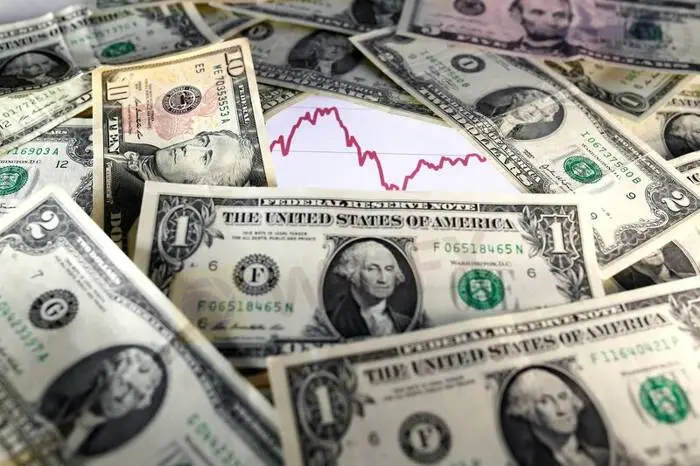简体中文
繁體中文
English
Pусский
日本語
ภาษาไทย
Tiếng Việt
Bahasa Indonesia
Español
हिन्दी
Filippiiniläinen
Français
Deutsch
Português
Türkçe
한국어
العربية
Analysis: Dollar’s surge spurs currency hedging by U.S. companies
Abstract: U.S. companies are ramping up efforts to protect their profits from a relentless rally in the dollar, as the greenback surges to multi-decade highs.
U.S. companies are ramping up efforts to protect their profits from a relentless rally in the dollar, as the greenback surges to multi-decade highs.
The dollar has climbed about 15% against a basket of currencies over the last year, helped by a hawkish Federal Reserve and heightened geopolitical tensions that have boosted the greenbacks safe-haven appeal.

GRAPHIC: Soaring dollar https://fingfx.thomsonreuters.com/gfx/mkt/lbvgnyanxpq/Pasted%20image%201652202820561.png
That surge has reduced the profits of U.S. multinational companies that convert foreign currency into dollars, adding to corporate worries over soaring inflation and a murky economic outlook and pushing some to more actively seek ways to hedge their earnings.
Companies citing currency headwinds in their latest earnings reports include Coca-Cola Co, Procter & Gamble and Philip Morris International Inc. More broadly, analysts have lowered their overall forecast for S&P 500 second-quarter profit growth to 5.6% from 6.8% at the start of April.
“Corporates have been spurred into action by the dollars untrammeled rise – and by the breaking of psychological barriers in most major exchange rates,” said Karl Schamotta, chief market strategist at business payments company Corpay.
The dollar stands at a two-decade high against the Japanese yen and a more than five-year high against the euro, after rising 13% and 8% respectively against the currencies this year.
To prevent big exchange rate moves from creating big swings in earnings, businesses are using various types of hedging strategies, including those that employ forwards and options.
While little industry-wide data are available to gauge how U.S. companies‘ hedging decisions are being driven by the dollar’s big advances, several firms that advise companies on managing FX risk note a rise in hedging activity.
“Some of the corporates we work with that have a set hedging policy have a percentage band as to how much of their exposure they are supposed to have hedged. We are seeing those clients move to the high side of their band,” said John Doyle, vice president of dealing and trading at Monex USA.
Hedging activity by Monexs clients rose 22% uptick in March 2022 versus 2021, and was up 24% for the first quarter compared with last year, Doyle said.
The urgency to guard against adverse exchange rate moves comes after years of muted FX volatility, during which currency fluctuations had limited impact on company earnings.
The negative impact of currency fluctuations on North American companies third-quarter 2021 results fell to the lowest level since the first quarter of 2018, data from treasury and financial management firm Kyriba showed in early February.
But foreign exchange volatility picked up late last year, as investors digested a hawkish turn at the Fed, which has already raised interest rates by 75 basis points since March. Markets are pricing in another 190 basis points of rate hikes in 2022.
Three-month volatility for the euro and the yen, against the dollar are at their highest since June 2020.
GRAPHIC: Euro-U.S. dollar volatility at 2-year high https://graphics.reuters.com/USA-STOCKS/zdvxogblapx/chart.png
As volatility picks up, “we are already seeing organizations re-adjusting their forecasts with 2% or more additional impacts to earnings than what they expected even a quarter ago,” said Bob Stark, global head of market strategy at Kyriba.
Not all recent hedging activity has been aimed at protecting against the dollars advance.
Dollar sellers, including importers who have enjoyed a boost in their purchasing power from the stronger currency, have rushed to lock in gains, Corpays Schamotta said.
At the same time, the dollars rise has been a boon to younger or smaller firms, including start-ups and companies looking to go public, as they tend to have more foreign costs than revenue.
Corporate clients at Silicon Valley Bank, which serves younger companies, have largely benefited from the stronger U.S. currency, said Ivan Asensio, head of FX risk advisory at the firm.
“Regardless of direction, however, the prospects of higher volatility has heightened hedging activity, awareness, and dialogue,” Asensio said.
(Reporting by Saqib Iqbal Ahmed; Editing by Ira Iosebashvili and Richard Chang)
Disclaimer:
The views in this article only represent the author's personal views, and do not constitute investment advice on this platform. This platform does not guarantee the accuracy, completeness and timeliness of the information in the article, and will not be liable for any loss caused by the use of or reliance on the information in the article.
WikiFX Broker
Latest News
Two Californians Indicted for $22 Million Crypto and NFT Fraud
RM62k Lost Investment Scam After Joining XRP Community Malaysia on Telegram
Victims of Financial Fraud in France Suffer Annual Losses of at Least €500 Million
WikiFX Review: Is Ultima Markets Legit?
Colorado Duo Accused of $8M Investment Fraud Scheme
What Impact Does Japan’s Positive Output Gap Have on the Yen?
Macro Markets: Is It Worth Your Investment?
Trading is an Endless Journey
SEC Warns on Advance Fee Loan Scams in the Philippines
Malaysia Pioneers Zakat Payments with Cryptocurrencies
Currency Calculator


